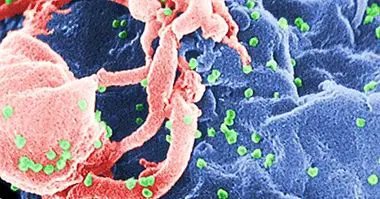Suicide prevention: relevant methods and factors
Suicide is not only the consequence of concrete mental problems, but it is associated with different global risk factors that affect a large number of people. In this article we will analyze the most relevant factors in suicide and its prevention , as well as the most usual methods of psychological intervention in these cases.
- Related article: "This is how the suicide thinks about death"
Relevant factors in suicide
According to data from the World Health Organization (2014), every year more than 800 thousand people commit suicide in the world ; It is the tenth cause of death worldwide. If we also add the unsuccessful attempts, the number is multiplied by ten, approximately, and many people have recurrent suicidal thoughts that they do not manage to execute.
The most common methods of suicide vary depending on the place, but they usually include suffocation, poisoning and, in places where it is easy to access them, the use of firearms. There is an increased risk of suicide in people over 70 and in those between 15 and 30; in the latter case the richest countries are an exception.
The conception of suicide as a taboo and a crime , which is present in most cultures, has historically hampered human communication about this issue and its naturalization, and consequently also the prevention of this phenomenon. Even in the field of clinical psychology it is a sensitive issue because of the frequency of complaints to professionals.
It is important to bear in mind that suicide is not simply a mental problem that arises in certain people, but there are many variables that affect the general population or some groups and that increase the risk of suicide, such as psychosocial stress and lack of of economic resources.
Some of the risk factors more clearly associated with suicide , according to the available scientific literature, are the following:
- Stressful life events, such as death of the spouse, serious financial difficulties or bullying (in children)
- Depression, schizophrenia, bipolar disorder, post-traumatic stress, OCD and other psychological problems that lead to hopelessness
- Social stigmatization of mental disorders, especially suicidal rumination
- Suicidal ideation and references to the possibility of committing suicide
- Abuse and dependence on alcohol, benzodiazepines, heroin and other central nervous system depressants
- Personal or family history of suicide attempts
- Access to firearms, poison or other deadly instruments
- Cranioencephalic trauma and other brain injuries
How to prevent suicide?
The traditional approach in the prevention of suicide has consisted in studying the risk factors by modifying them in people in whom ideas of this type are detected. However, it is not very clear that this approach is effective; in this sense, the most likely is that the necessary measures are at a deeper level of society.
WHO recommends to all states of the world the adoption of a series of measures for the prevention of suicide , which are also relevant from a practical point of view because of the high public cost that health care can imply. At the end of this article you can find the reference to this text.
This organization also recommends strategies such as emergency hospitalization for people at high risk of suicide, treatment of the underlying problems of suicidal ideation, participation in support groups and the practice of psychologically beneficial activities, such as physical exercise and meditation. .
On the other hand it is important to mention what are the factors that protect against suicide. In general, we can highlight the following:
- Presence of a solid network of social and family support
- Active participation in the community or in society
- Access to therapeutic and psychosocial services
- Good interpersonal and problem-solving skills
- High degree of self-control and expectations of self-efficacy
- Appropriate management of stressful life events
- Treatment of the underlying psychological disorders
- Beliefs and values that favor the search for support or reject suicide
Methods of psychological intervention
Among all psychological intervention programs, the one that stands out for its effectiveness in preventing suicide is the one developed by Marsha Linehan for borderline personality disorder. The research reveals a reduction in suicide attempts and hospitalization in people treated with this method.
Approximately half of people who commit suicide meet the criteria for major depressive disorder . In this sense, cognitive therapy and behavioral activation therapy, which is derived from the previous one, have been shown to be useful in reducing suicidal ideation and the rest of depressive symptoms.
From the field of health psychology, mainly in collaboration with public entities, psychoeducational and emotional or social support tasks are sometimes promoted, and some screening tests are also administered in at-risk populations, such as adolescents. However, these types of interventions are quite scarce in many places.
More generally, it is important to keep in mind that Suicide is associated mostly with a low quality of life . Any policy measure that improves the satisfaction and well-being of people in a place will reduce their risk of suicide, such as improving access to health services or increasing average wages.
Bibliographic references:
- Linehan, M.M., Rizvi, S.L., Shaw-Welch, S. & Page, B. (2000). Psychiatric aspects of suicidal behavior: personality disorders. In Hawton, K. & Van Heeringen, K. (Eds.), "International Handbook of Suicide and Attempted Suicide." Sussex, United Kingdom: John Wiley & Sons.
- World Health Organization (2014). Prevention of suicide: a global imperative. Geneva: World Health Organization.



















